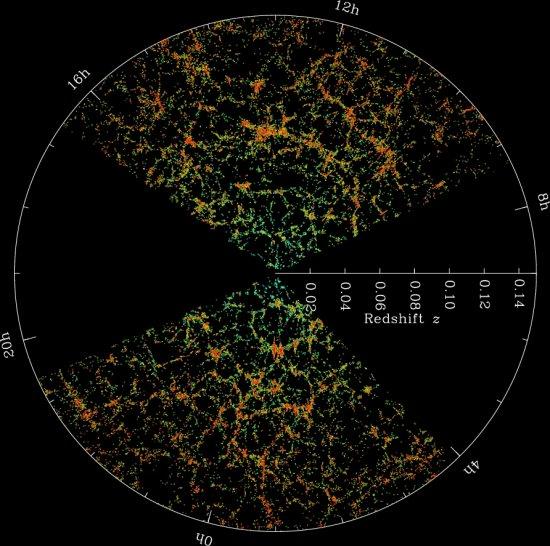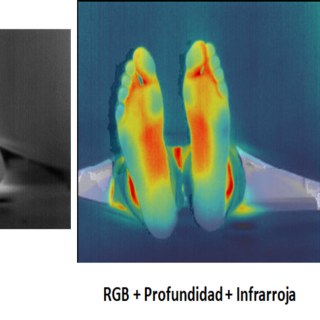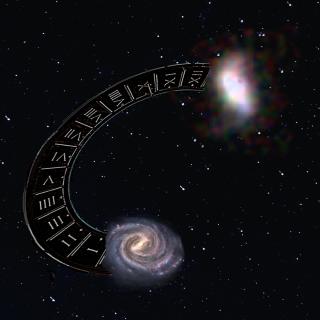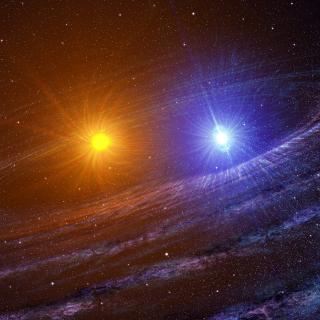Today, just like a present from the Three Wise Men for all, professional and amateur astronomers, and the general public, the Sloan Digital Sky Survey (SDSS), with the participation of the Instituto de Astrofísica de Canarias (IAC) and fifty other international partners, issues its latest public data release, the final of the third epoch of the survey (SDSS-III). "Data Release 12" (DR12) contains information about 470 million stars and galaxies, making it one of the largest and richest databases in the history of astronomy.
"The SDSS is one of the most productive scientific consortia in the world, and complements very nicely the facilities we have available in our observatories", remarks Rafael Rebolo, the Director of the IAC and an active user of SDSS data. "The most astonishing feature of the SDSS is the breadth of ground-breaking research it enables", says Daniel Eisenstein of the Harvard-Smithsonian Center for Astrophysics, the Director of SDSS-III. "We've searched nearby stars for planets, probed the history of our Milky Way, and measured nine billion years of our Universe's accelerated expansion."
After a decade of design and construction, the SDSS began mapping the cosmos in 1998, using the dedicated 2.5-meter Sloan Foundation Telescope at Apache Point Observatory (APO) in New Mexico, in the United States. Each phase of the project has used this telescope, equipped with a succession of powerful instruments, for a distinct set of astronomical surveys. SDSS-III started observations in July 2008 and completed its six-year, $45 million program in June 2014. The SDSS-III Collaboration includes 51 member institutions and one thousand scientists from around the world.
SDSS-III has devoted most of its 2000 nights of observing to measuring spectra: passing light from individual stars and galaxies through a fiber-optic spectrograph, which divides light into component wavelengths much like a prism separates light into the colors of the rainbow.
By looking in near-infrared wavelengths to see through obscuring dust clouds, the Apache Point Observatory Galactic Evolution Experiment (APOGEE) has measured the chemical composition of 100,000 stars probing all regions of the Milky Way. "Mapping out the elements in a star is like reading its DNA", says Steve Majewski of the University of Virginia, Principal Investigator of APOGEE, one of the four surveys that comprise SDSS-III. The project is using those DNA readings to decipher the history of the Milky Way galaxy from stars that formed billions of years ago but that we can observe today.
The software that decodes the stars' DNA readings was written by a small team within the project. "Astronomers have always done this by comparing the data with reference stars with known chemical compositions", says Carlos Allende Prieto, a Research Scientist at the IAC and leader of the developing team. "It's the first time we do something that big. APOGEE has analyzed 15 chemical elements in 100,000 stars, so using software was the only possible way to get the job done."
In addition to these elemental measurements from APOGEE, SDSS DR12 provides the first public release of data from MARVELS (the Multi-Object APO Radial Velocity Exoplanet Large-Area Survey). "MARVELS measures the small variations in velocity that massive planets or brown dwarfs cause in the stars they orbit," explains Jonay González Hernández, a Ramón y Cajal postdoctoral fellow at the IAC. "MARVELS is a large survey, with observations for 3000 stars. We have used multiple telescopes in La Palma to confirm and complement the MARVELS data, identifying several new brown dwarfs."
DR12 also presents 3-dimensional maps of cosmic structure traced by galaxies and intergalactic hydrogen from the Baryon Oscillation Spectroscopic Survey (BOSS). "These maps have allowed us to make the first firm detection of the signatures left by sound waves present shortly after the Big Bang," explains Ismael Pérez Fournon, a professor at the University of La Laguna. The BOSS team is using those imprints to trace the expansion of the Universe across nine billion years of cosmic history, with unprecedented precision. Their final analysis is expected later this year.
The Sloan Extension for Galactic Understanding and Exploration (SEGUE), begun in SDSS-II and was completed in SDSS-III, measured visible-light spectra of a quarter-million Milky Way stars. "These stars are distributed across the Galaxy, and give the largest sample of the most distant parts of the Galactic halo, where the oldest and most primitive stars tend to live", says Emma Fernández Alvar, a student at the IAC whose PhD thesis is based on these data.
Data Release 12 will fuel science analyses for years to come, and puts the full power of the SDSS-III into the hands of the public. "One of the most important decisions we made at the beginning of the SDSS was that we would release all of our data, so everyone could use it", says Alex Szalay of Johns Hopkins University, which developed the powerful online interfaces that most astronomers and many in the general public use to access the SDSS data. "Nowadays we hear about Big Data left and right. The SDSS launched Big Data astronomy years before anyone was using that term."
"Crossing the DR12 finish line is a huge accomplishment by hundreds of people," says Eisenstein. "But it's a big universe out there, so there is plenty more to observe." The Sloan Survey is continuing at full speed with SDSS-IV, which began in July 2014 to study cosmology, galaxies, and the Milky Way. "The IAC is heavily involved in this new phase of SDSS, and we're looking forward to the following six years of the project," says Rebolo. The most exciting objects identified in SDSS will be followed up with the 10.4-m GTC and other telescopes in the Roque de los Muchachos Observatory, in La Palma.
CONTACTS
- prensa [at] iac.es (prensa[at]iac[dot]es)
- Ismael Pérez Fournon: 922-605257, ipf [at] iac.es (ipf[at]iac[dot]es)
- Carlos Allende: callende [at] iac.es (callende[at]iac[dot]es)
FURTHER INFORMATION



